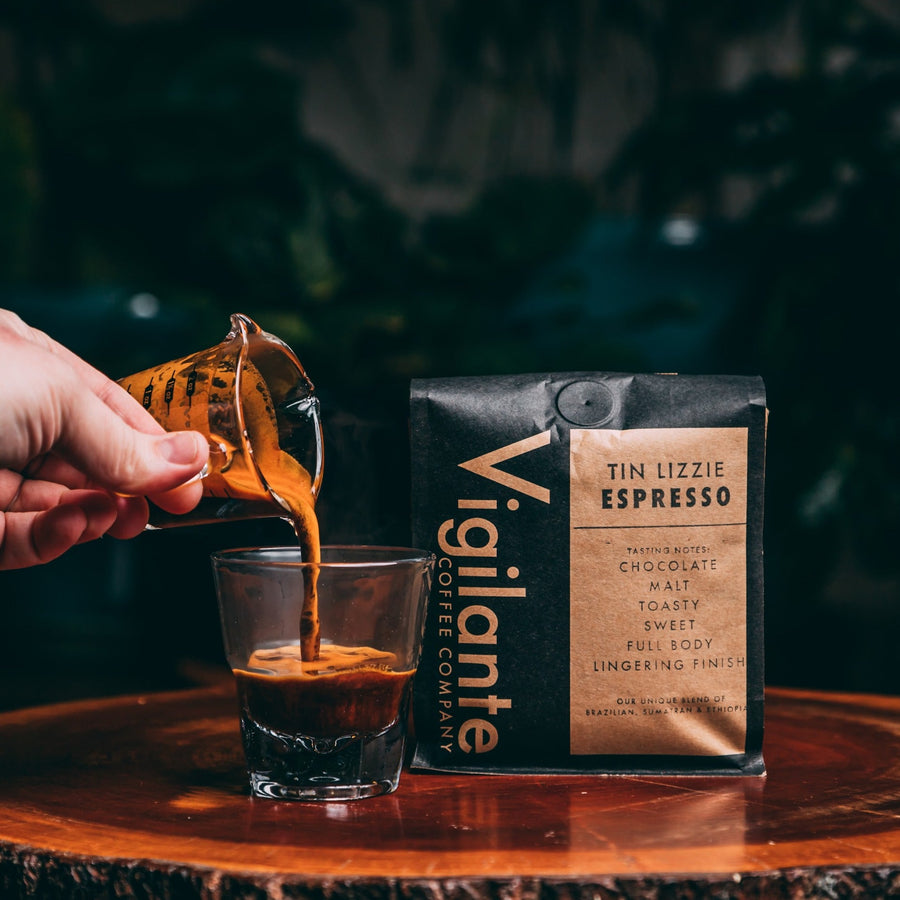SOE Single Origin Espresso – Ideal for Handcrafted Brewing Methods
SOE Single Origin Espresso – Ideal for Handcrafted Brewing Methods
Blog Article
Understanding Coffee Beans: the Trip From Espresso to Blended Coffee Beans

The Beginnings of Coffee: A Worldwide Perspective
While you might assume of coffee as a contemporary staple, its beginnings trace back centuries, intertwining with societies across the world. The tale begins in Ethiopia, where tale says a goat herdsman named Kaldi uncovered the stimulating effects of coffee beans after seeing his goats romping energetically after consuming them.
As profession routes broadened, coffee made its means to Europe in the 17th century, swiftly gaining popularity. It changed from a magical drink into an everyday ritual, intellectual exchanges and motivating celebrations. Each society added its distinct spin to coffee prep work, improving its background. This global journey highlights how coffee links us, going beyond boundaries and unifying varied practices via an easy bean.
Growing and Harvesting of Espresso Beans
As coffee's journey evolved, the focus shifted to the cultivation and harvesting of specific bean varieties, specifically those made use of for coffee. You'll discover that espresso beans commonly come from Arabica or Robusta plants, each offering unique flavors. The optimal growing conditions consist of high elevations and abundant, well-drained soil, which enhance the beans' quality.
During the harvest, selecting approaches vary. In some regions, workers hand-pick ripe cherries, guaranteeing only the very best fruit goes to handling. In various other locations, mechanical farmers are utilized, particularly on larger farms. Timing is vital; you intend to collect when the cherries get to peak perfection for optimum taste.
As soon as collected, the beans are planned for processing, which is important in determining their last taste. Recognizing the growing and harvesting procedures gives you understanding into what enters into your favorite coffee, enriching your admiration for every cup.
Handling Approaches: From Cherry to Bean
Since you have actually found out about gathering coffee beans, let's check out how those cherries change right into the coffee beans you love. You'll see just how different harvesting methods influence flavor, adhered to by the important actions of fermentation and drying. Lastly, we'll damage down the milling and grading process that establishes your coffee's quality.
Harvesting Strategies Described
When it comes to coffee, comprehending harvesting techniques is necessary, considering that they directly affect the taste and high quality of the beans you delight in. There are 2 main methods: discerning picking and strip selecting. Discerning picking involves hand-picking just ripe cherries, guaranteeing you get the most effective quality beans. This approach frequently causes a richer taste profile, though it's more labor-intensive. On the various other hand, strip selecting means gathering all cherries simultaneously, no matter perfection. While it's quicker and cheaper, this can cause a mix of flavors, impacting the end product. Inevitably, the selection of collecting strategy can significantly influence your coffee experience, so it's worth understanding exactly how those beans made it to your cup.
Fermentation and Drying
After harvesting, the following action in processing coffee beans play a significant role in forming their taste. You'll find that fermentation is vital, as it aids damage down the mucilage surrounding the beans, enhancing their preference profile. Depending on the approach, this procedure can last from a few hours to several days, with differing results based on temperature level and moisture.
Sun-drying permits the beans to take in flavors from the environment, while mechanical drying out warranties consistent dampness levels no matter of weather condition. Correct drying is crucial to avoid mold and mildew and preserve the beans' top quality, ultimately influencing your mug of coffee.
Milling and Grading Process
As fermentation and drying out established the stage for taste development, the milling and grading process warranties that only the ideal coffee beans make it to your cup. This phase involves getting rid of the outer layers of the coffee cherry, including the parchment and husk. After milling, the beans are arranged by size and weight, making certain an uniform top quality. You'll discover that grading aids determine issues and categorize beans, which affects taste and aroma. High-quality beans receive a greater quality, resulting in a richer coffee experience. Once graded, the beans are all set for packaging and delivery, maintaining their distinct attributes. This thorough process is vital for providing the remarkable taste you enjoy in every sip of your preferred mixture.
Toasting Strategies: Opening Taste Possible
When you roast coffee beans, the technique you select can dramatically impact the flavor profile. Understanding the connection in between time, temperature level, and toasting techniques is key to revealing the potential of your brew. Let's explore how these elements integrated to create the excellent mug.
Toasting Techniques Described
While you may think that all coffee roasting approaches produce the exact same results, the fact is that each strategy exposes distinct flavor possibilities in the beans. You can select between methods like drum toasting, air roasting, and even conventional frying pan roasting. Drum toasting uses a rotating drum to equally distribute heat, improving caramelization and creating a balanced taste. Air roasting, on the various other hand, circulates warm air around the beans, advertising a lighter roast with noticable acidity. Frying pan roasting enables hands-on control however requires consistent interest to stay clear of burning. Each technique has its nuances, so trying out with different strategies can assist you uncover the ideal roast that aligns with your taste choices. Appreciate the journey of locating your optimal mug!

Influence On Flavor Account
Various toasting techniques not just affect the process however likewise considerably impact the flavor profile of the coffee beans. Dark roasts, on the other hand, bring out bold, smoky tastes, occasionally covering up the bean's unique characteristics. Understanding these subtleties aids you value the creativity behind your cup of coffee, enhancing your overall experience with every sip.
Time and Temperature Level Variables
To launch the full flavor click for more info potential of coffee beans, both time and temperature level throughout the roasting process play significant duties. When toasting, you'll find that higher temperature levels can swiftly establish flavors, yet if you hurry it, you may wind up with burned notes. Alternatively, lower temperatures permit for an extra progressive flavor growth, showcasing the beans' one-of-a-kind features.

Timing is equally as important; expanding the roast too long can bring about a loss of acidity and illumination, while as well brief a roast might leave the beans underdeveloped. Locating that sweet place requires method and experimentation. By changing these factors, you can expose the abundant, complex tastes concealed within each bean, creating an absolutely amazing coffee experience.
The Art of Mixing: Crafting Unique Coffee Profiles

Start by choosing a base coffee that gives a solid foundation. Choose complementary beans to improve details taste notes. A bright Ethiopian bean can bring fruitiness, while an abundant Brazilian coffee includes body. Testing is essential-- do not hesitate to change proportions up until you locate your optimal account.
As you blend, remember that each combination tells a story. You're not just making coffee; you're producing an experience. Take your time, preference regularly, and appreciate the trip of finding your signature blend - Single Origin Espresso.
Developing Approaches: Just How Prep Work Impacts Flavor
Blending coffee opens up a domain of flavor opportunities, yet just how you brew that blend can significantly influence your last mug. Various developing techniques draw out distinct flavors and fragrances, so it's crucial to choose wisely. A French press permits sediments and oils to continue to be, producing a rich, full-bodied experience. On the various other hand, a pour-over highlights the coffee's clearness and brightness, perfect for showcasing fragile notes.
Espresso, with its high stress, produces a focused shot that accentuates sweet taste and crema. If you choose a lighter mixture, think about a cool brew approach; it generates a smooth, less acidic taste.
Readjusting variables like water temperature, grind dimension, and make time can transform your coffee's account. Welcome the art of brewing to find the tastes hidden in your coffee blends.
The Future of Coffee: Sustainability and Innovation
As the coffee sector progresses, sustainability and development are coming to be vital for resolving environmental obstacles and meeting consumer needs. You'll see that more coffee business are embracing eco-friendly practices, from visit here sourcing beans fairly to applying sustainable farming methods. These changes not just aid the earth yet also enhance the high quality of the coffee you take pleasure in.
You could see technologies like biodegradable packaging and water-saving brewing methods that decrease waste. Advanced innovation, such as blockchain, is likewise ending up being prominent, making sure openness in the supply chain, which enables you to map your coffee back to its origins.
In enhancement, spending in neighborhood areas and sustaining farmers with fair trade initiatives fosters a more lasting coffee ecosystem. As you drink your following mug, keep in mind that your options can contribute to a brighter future for coffee. By choosing lasting brand names, you're not simply taking pleasure in a beverage; you're making a positive effect on the globe.
Often Asked Concerns
What Is the Distinction Between Arabica and Robusta Beans?
Arabica beans are smoother, sweeter, and have a higher level of acidity, while robusta beans are stronger, extra bitter, and consist of more high levels of caffeine. When brewing your coffee., you'll notice these distinctions in flavor and fragrance.
How Does Elevation Affect Coffee Bean Flavor?
Elevation impacts coffee bean additional resources taste significantly. Greater elevations generate beans with brighter acidity and facility flavors, while reduced altitudes usually generate beans that are larger and less nuanced. You'll see these differences in your mug!
What Are the Health Conveniences of Drinking Coffee?
Consuming coffee can boost your power, boost mental focus, and also improve physical efficiency. It's rich in antioxidants, might lower the danger of specific illness, and can advertise a healthier metabolism when consumed in small amounts.
Can Coffee Beans Be Reused for Brewing?
Yes, you can recycle coffee beans for developing, but the flavor could be weaker. If you delight in trying out, try reusing them in various means, like cold brews or contributing to smoothie mixes for an extra kick.
Exactly how Should I Shop Coffee Beans for Quality?
To maintain your coffee beans fresh, store them in a closed container in a trendy, dark place. Avoid subjecting them to wetness, warmth, or light, as these aspects can swiftly weaken their taste and fragrance.
Understanding Coffee Beans: the Journey From Espresso to Blended Coffee Beans.
Now that you've learned about harvesting espresso beans, let's explore how those cherries transform into the coffee beans you enjoy.When you roast coffee beans, the approach you pick can drastically affect the flavor profile - Single Origin Espresso.While you might think that all coffee roasting methods yield the same results, the truth is that each method discloses special taste potentials in the beans.Different roasting techniques not only influence the process but likewise considerably impact the taste account of the coffee beans
Report this page